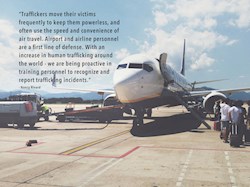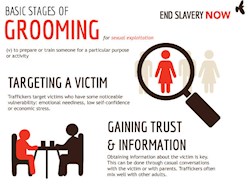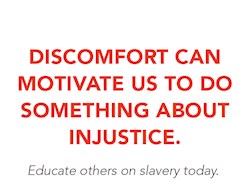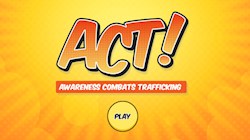
Human Trafficking is a hidden crime. What do we mean by that?
First, let’s start with the exploited.
Human Trafficking often relies on deception, manipulation, or force to keep the exploited person under the influence of the trafficker. People that become victims of human trafficking are often vulnerable—usually those without the necessary government or social supports needed to survive.
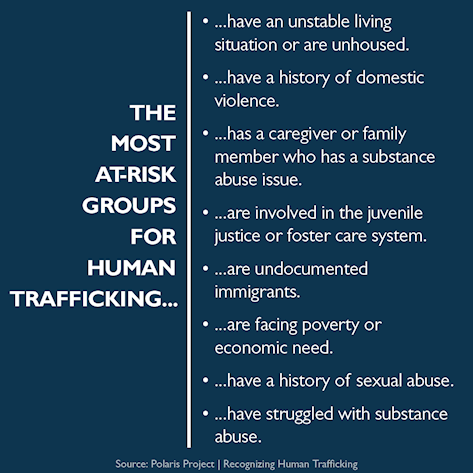
Next, let’s talk about the perpetrator of trafficking. The trafficker will usually find someone who may be susceptible for a variety of reasons, including mental or emotional stability, economic poverty, natural disasters, or lack of a social safety net.
They will convince this person they can help and that they care about them until the person is convinced the trafficker wants to help them. The trafficker will exploit this vulnerability however they can until the person is so isolated they feel like they don’t have any choice besides listening to their trafficker.
Traffickers will use any advantage they can find to create or exacerbate vulnerabilities that will lead to a power imbalance. From there, they will use these power imbalances to exploit these people for profit.
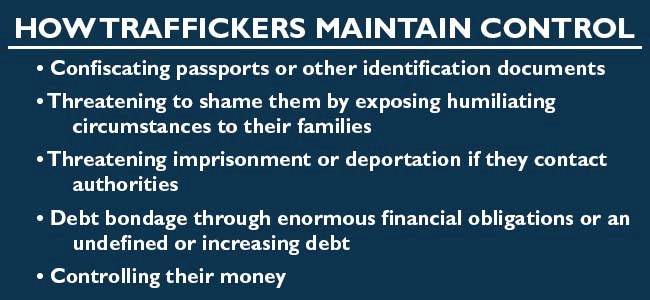
A common example of trafficking revolves around fraudulent opportunities. The trafficker may tell this person they know of great job opportunities or the chance at a greater education and the trafficker will help them get there. This person will leave the place they know and go with the trafficker hoping they are being led to a greater life. However, when they arrive (or during travel) the trafficker will take travel and identification documents away from the person making it impossible to return home. The trafficker may also tell this person that they now owe them a fee for helping them to this new location and that the person must work to pay off the debt they didn’t know they would receive.
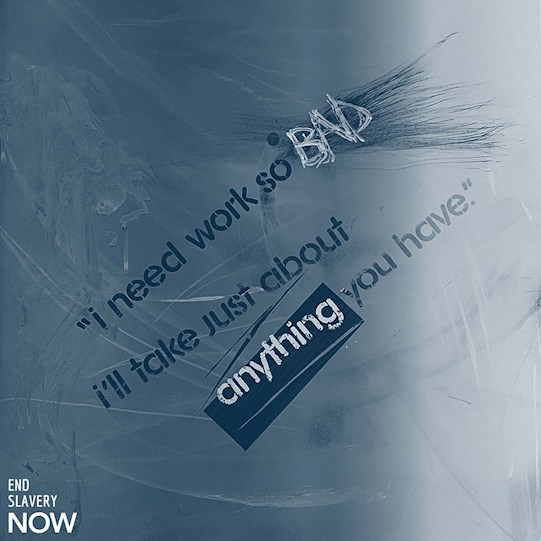
Another common type of exploitation is done through friendship or romance. The trafficker will feign a caring relationship with the person, lead them through grooming practices and isolate this person from their previous life. Soon, all this person ‘knows’ is what their trafficker has told them. Eventually they will truly believe their trafficker has their best interests at heart when in reality, the trafficker is using this person for one thing: profit. These “Romeo Relationships” are often seen in the commercial sex industry where a “boyfriend” turns into a “pimp” selling out people that trust them into forced labor.
This crime operates in the shadows for a few key reasons. First, the targeted victims are often part of marginalized communities and therefore already lack the basic respect they are afforded as human beings.
Secondly, victims may not be aware that they are involved in a human trafficking situation. They way media portrays human trafficking often looks like smuggling or kidnapping–often showing victims being restrained and tied up, but this isn’t the reality. Most human trafficking is largely a physiological manipulation of the victim (although physical abuse is common as well). Many people may be put under arrest for solicitation, dealing drugs, or shoplifting and forced to go through the justice system without anyone asking the question if they were forced or coerced into this crime by someone they rely on. Remember, traffickers only care about profit so forcing their workers to do other illegal activities to increase their profits is a common practice.
Lastly, trafficking may be perpetrated by unlikely sources. Most people expect parents and guardians to educate and protect their children from the dangers of the world. Caregivers are trusted to do what is right for the person receiving care, but that doesn’t always happen. There are news reports of parents selling their children for drugs or money, of police concealing a trafficking ring for their own pleasure and profits, or of caregivers incapacitating their elderly patients and gaining access to their finances.
When healthcare workers, educators, law enforcement, the justice system and community members are trained on accurate descriptions of human trafficking, they can begin to search within their communities to find hidden victims.
About the Author
Related Actions
Play ACT! a Human Trafficking Awareness Game
Download ACT!, an educational human trafficking awareness game developed by the Lifeboat Project.
World Day against Trafficking in Persons
July 30th is UN World Day Against Trafficking in Persons. Learn more about human trafficking, as well as how to combat it.



